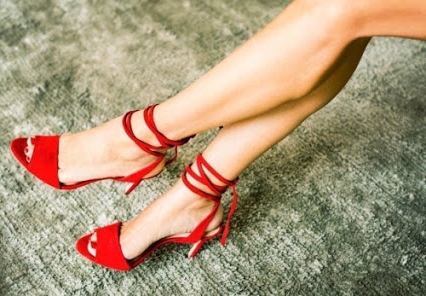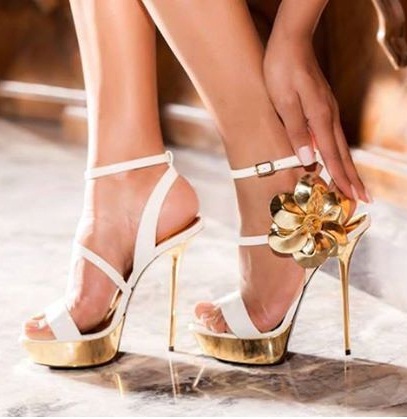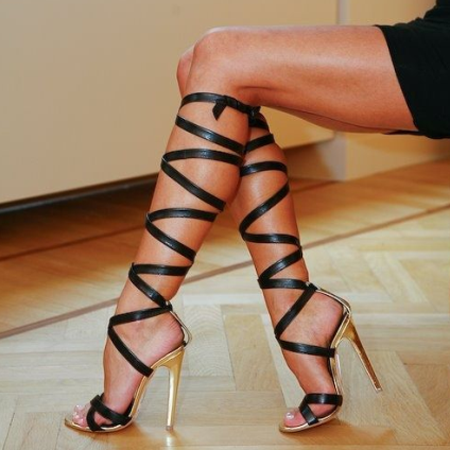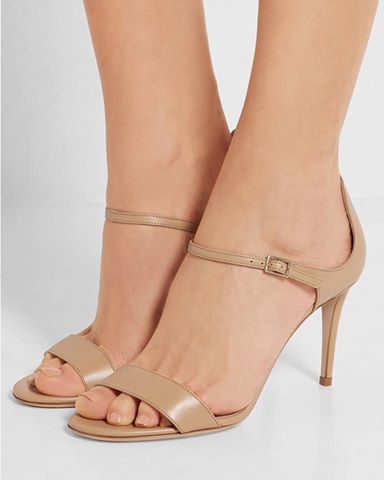9 TIPS FOR WALK BETTER WITH HIGH HEELS
Aug 26, 2016
 When Marilyn Monroe said: “Give a girl the right shoes, and she can conquer the world,” we’re fairly certain she was talking about heels. But if you can’t walk in said heels? Well, that essentially negates any potential conquests, whether you’re in the boardroom or the bar. Accordingly, we’ve put together the 9 tips to walking in heels the right way.
When Marilyn Monroe said: “Give a girl the right shoes, and she can conquer the world,” we’re fairly certain she was talking about heels. But if you can’t walk in said heels? Well, that essentially negates any potential conquests, whether you’re in the boardroom or the bar. Accordingly, we’ve put together the 9 tips to walking in heels the right way.
Size Matters

First and foremost, you want to make sure your heels (or any shoe, for that matter) are the proper size. If they're too big, your foot will slide around awkwardly. Too small and your foot will feel cramped, which'll make walking a pain — literally and figuratively.
2.Pace Yourself

If you’ve never walked in high heels before, don’t start out learning with 5-inch stilettos — that’s a recipe for pain and maybe even injury,Try something smaller, like a 2-inch heel or wedge to get used to the feeling. You can always work your way up to your most killer heels.
3. Be Conscious of the Rest of Your Body
Engage your abs — this gives you poise and control. Walk heel to toe, which transfers impact to the leg instead of the ball of the foot. And relax your hips and knees so you'll be fluid and graceful.
4. Take Time-Outs

There's no shame in taking a seat now and then. It'll give your feet a chance to rest so when you are on your feet, you'll be able to walk more comfortably.
5. Let The Music Move You
If you walk to the subway and put your headphones on and walk to music . Listen to the rhythm and walk to the beat. Feel like you’re dancing, almost.” Feel like you're on the set of your own biopic.
6. Look For Sturdy Soles

Paper-thin soles don't provide great support for your feet. If possible, choose a style that's made with a more substantial material. You want a thicker sole or a little bit of a platform, which will offset some of the pressure when you’re walking.
7. Slow It Down
Heels aren't worn in gym class for a reason, so take your time when you're walking in them. Wearing heels naturally makes your stride shorter, so you’ll need to take more steps than usual.
8. Break In The Bottoms
Scratch the bottom of your soles with sandpaper." It seems like a strange idea to purposely rough-up a brand new pair of shoes, but slick soles don't provide any traction on surfaces like hardwood and tile. To mitigate this problem, scuff them up a bit. If you don't have sandpaper, stroll up and down a sidewalk instead.
9. Get Some Over-The-Counter Help
There are plenty of products available at the pharmacy that'll give your feet some extra support. Especially if it’s made of silicone, it will hold your foot more steady in the shoe so your feet aren’t sliding forward as much, which will protect your toes from friction and blisters.








